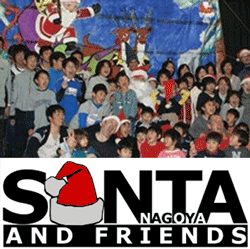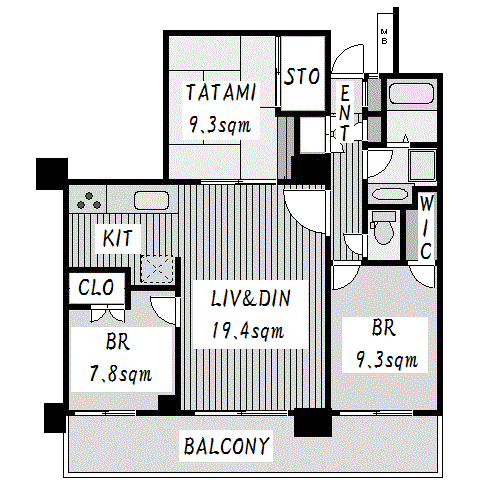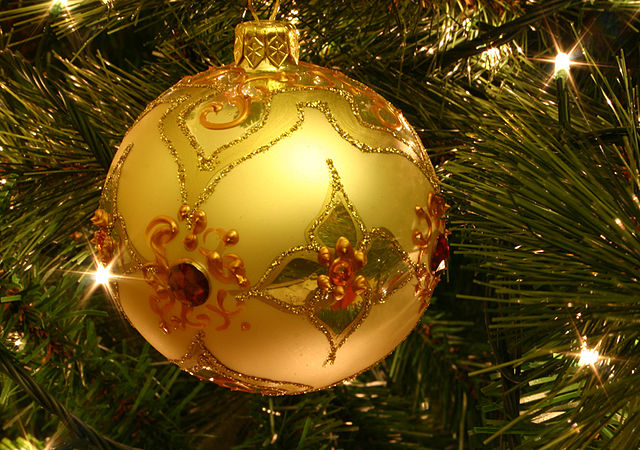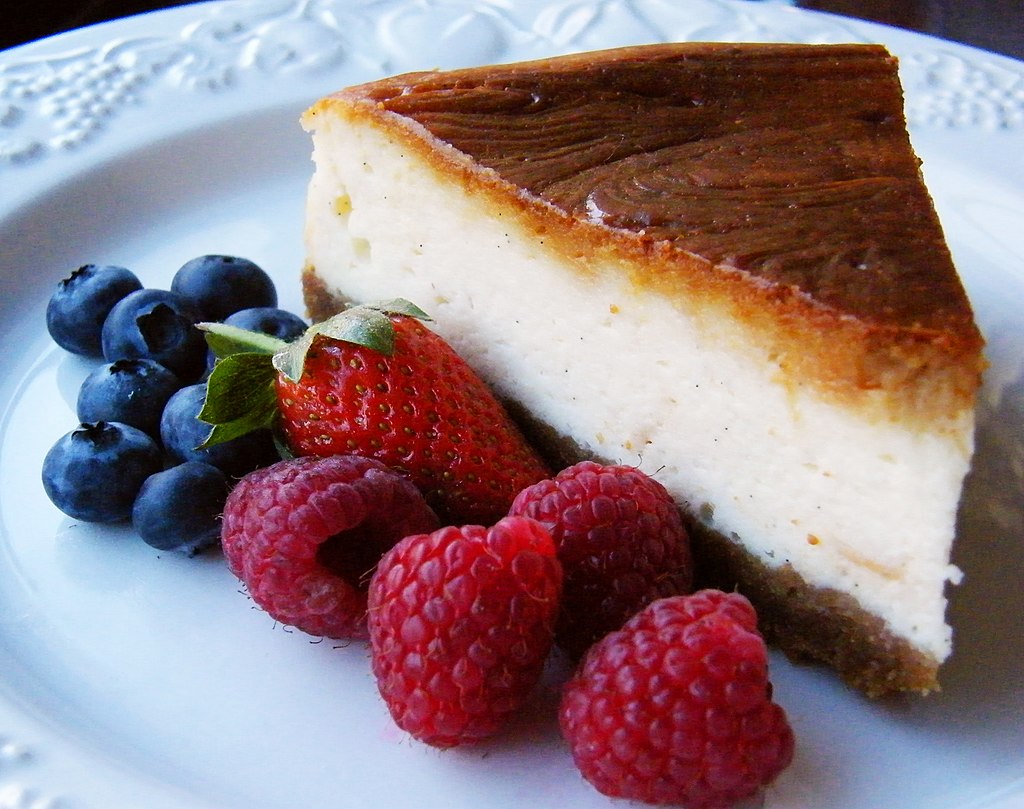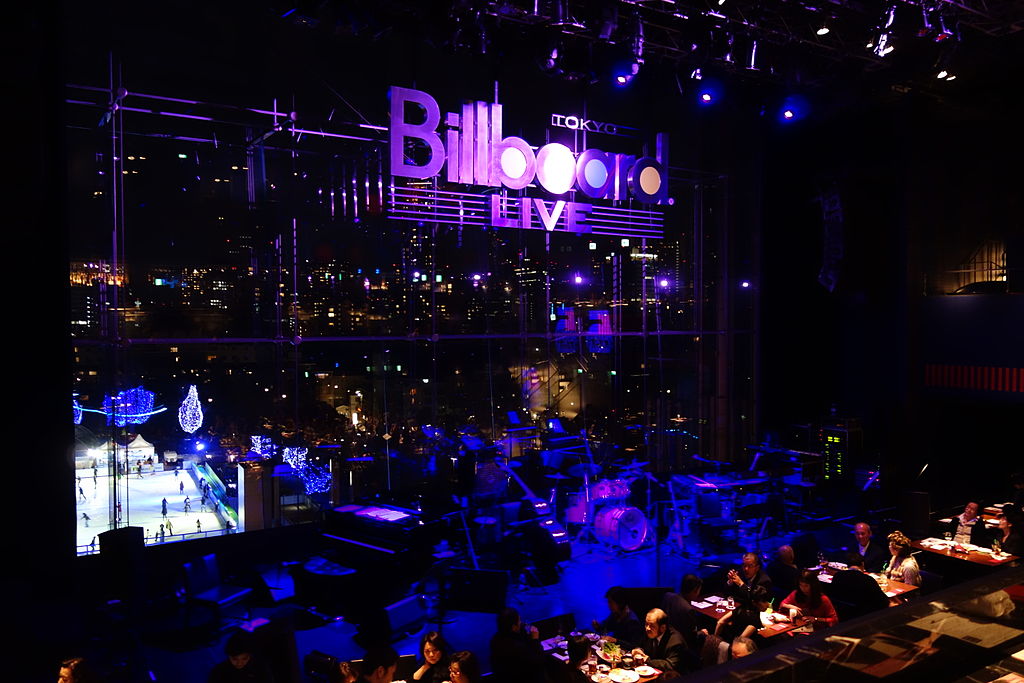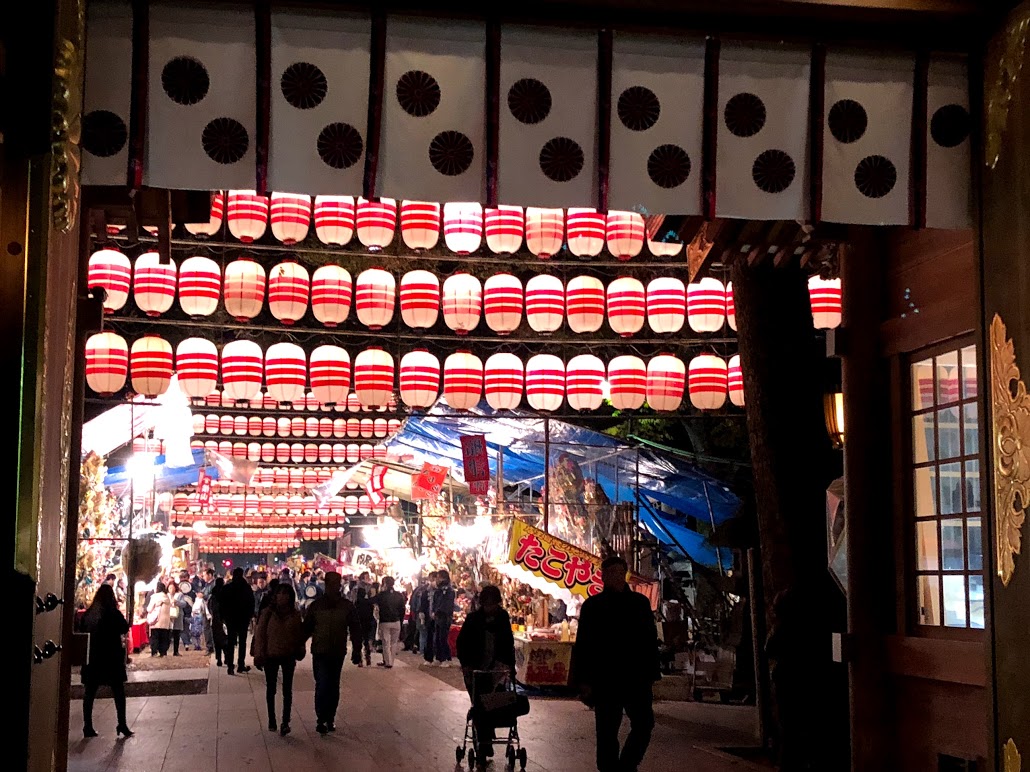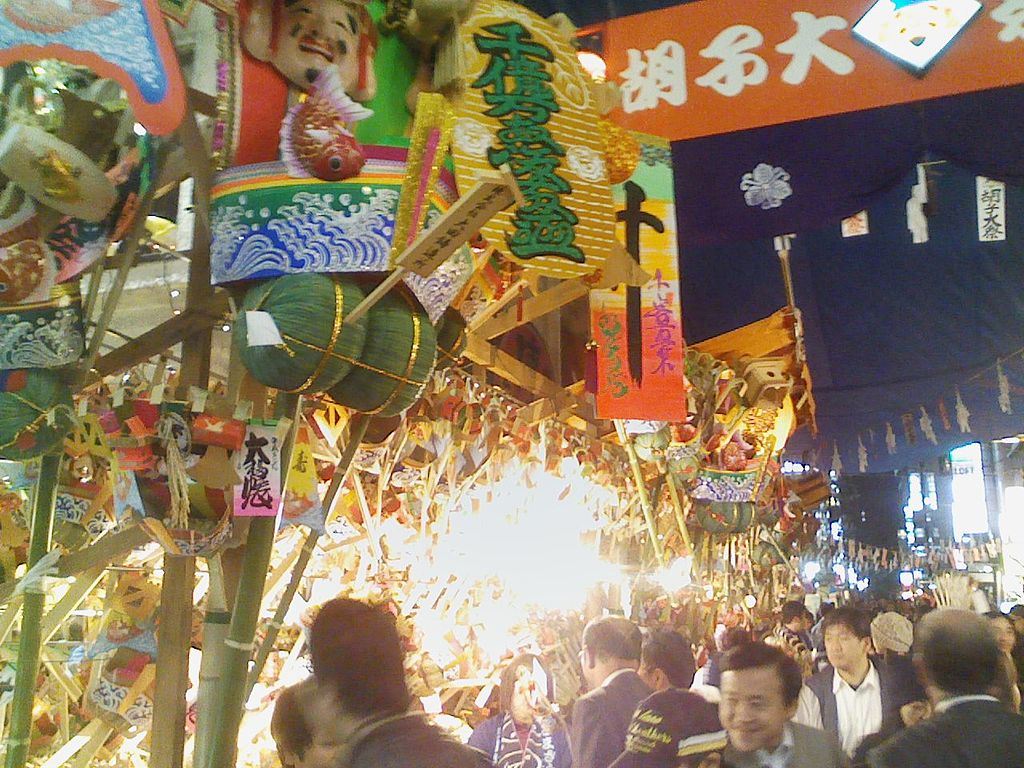Nov 25, 2018
Santa and Friends Nagoya -Caring for Nagoya’s Orphans


Santa and Friends Nagoya has been caring for Nagoya’s orphans, and providing an opportunity for people to participate in volunteer activities and make friends in Nagoya for 9 years. If you like children and have been looking for some way to give back, this may be your best opportunity in Nagoya!
Santa and Friends Nagoya has been helping orphans in Nagoya for 9 years. Focusing on 5 local Nagoya orphanages, the concept of SFN was first to celebrate Christmas, spread a little holiday cheer, and bring a few smiles to many children’s and volunteer’s faces. Every year over 100 volunteers, and sponsors help bring together 250+ orphans from 5 different orphanages for an amazing full day Christmas celebration extravaganza. Christmas games, magicians, musicians, story-telling, interactive activities, crafts and cookie decorating are just a few of the activities offered to the children.
While the Christmas event is the key event, from 2011 they became more involved and interactive with the orphanages to develop closer relationships with the children by organizing, assisting with, and carrying out a number of activities with the kids at each orphanage each and every month. Activities include: Summer barbecues, beach trips, English classes, sporting events, dancing, yoga, arts and crafts, camping, and ski trips are regular events, as are events and support requested by the individual orphanages themselves. They do what needs to be done, and they do it in a way that is fun and rewarding for everyone involved.
To Get Involved in Santa and Friends
- Make the decision that you would like to go outside yourself, to explore new paths, and find new, genuine ways towards fulfilment through community service!
- Tell us a bit about yourself and your availability though our volunteer application form.
All information is kept completely confidential, and is necessary because they work with children!
Contact Santa and Friends
Phone: 052 783 1817
Email: santaandfriendsnagoya@gmail.com
Website: www.santaandfriendsnagoya.com
Nov 22, 2018
Minpaku: Subletting in Japan

Minpaku is a private accommodation or lodging available for rent – not a hotel, Airbnb, etc. Staying in a minpaku is often cheaper when compared to hotels, and offer more options for guests. Also, the owner of the apartments/houses can earn some money from them.
In regards to this article, the thing we want to communicate is that not all the rental apartments or houses allow you to sublet in this minpaku style. Stay in one, by all means, but before you try to make a few bucks on one yourself you should know that the owner makes the rules. i.e. Keeping a pet is prohibited or smoking is prohibited (if specified in the contract, of course). 99 % of housing contracts in Japan specifically prohibit subletting, and if the Lessee (tenant) violates that clause, the Lessor (owner, etc) has a right to cancel the contract on the spot.
Nov 19, 2018
Buying a Christmas Tree in Hiroshima 2019
If you are in the market for a Christmas Tree to liven up your holiday season you with trim and presents, you are in luck. Stocks are very limited so, don’t delay! The trees are a bit shorter than you might get used to but they have very nice shapes and I am certain they will bring you a Merry Christmas.
Real Christmas Trees
Home Centers
Around the holiday season, you can find real or artificial trees, lights, displays and other assorted holiday decorations at many of these stores around the area. What is in each one is impossible to say, but its worth a shot!
Artificial Trees
If the options above are sold out or are simply unwilling to deal with pine needles there is always the artificial option.
Ikea
The local Ikea is a reasonably good source for trees and decorations.
www.ikea.com/jp/en/search/?query=christmas
www.ikea.com/ms/en_JP (Store Locator)
Foreign Buyers Club (Online)
We probably don’t have to tell Kobe about FBC, but just in case… FBC is billed as “Food and Fun from home – direct to your door – anywhere in Japan;” this online international grocery store has been delivering the goods to the broader expat community in Japan since 1988. They have “pine trees” in various sizes, but they sell out quickly.
Costco
You can get trees, decorations, and paper here but you will find a small selection to choose from. On the plus side, they also stock lawn reindeer and tacky giant lawn Santa.
www.costco.co.jp/p/locations?lang=en
Don Quijote
Don Quijote stores are huge and seem to stock everything. Christmas decorations may be touch and go depending on which shop you try, but you can assume they will have SOMETHING for you.
Loft
Loft has a small selection of artificial trees and convenient locations around the area.
Tokyu Hands
Tokyu Hands has a small selection of artificial trees and convenient locations around the area.
Home Centers
Around the holiday season, you can find real or artificial trees, lights, displays and other assorted holiday decorations at many of these stores. What is in each one is impossible to say, but its worth a shot!
(Online) Nitori
Nitori has a number of decorations and a small artificial few trees. If you are looking for Christmas lights, for some reason Nitori has a wide selection of them.
(Online)Amazon Japan
Amazon Japan is a good source for trees and decorations, probably one of the widest selections available in fact.
By Kris De Curtis (Flickr) [CC BY 2.0], via Wikimedia Commons
Nov 19, 2018
Best Places for Cheesecake in Kobe

Kobe is most famous for its beef, but it’s second most famous for its desserts. The top dessert of all is cheesecake. Kobe cheesecake is unlike anything you’ve tried before; plus, every restaurant, café, and bakery has its own recipe. A few places stand out as being the very best.
Kannonya
Although it is called Denmark Cheesecake, this dessert is definitely Japanese. The cake gains its name from the cheese it uses, which is imported from Denmark. The result is something completely unique.
The dessert features a top of melted cheese, which is stringy (even a little crispy) in texture and salty in taste. The center of the cheesecake is a soft sponge. You eat it hot, to properly enjoy the molten cheese.
Cafe Keshipearl
At Cafe Keshipearl, you’ll find several types of homemade cheesecake, different ones every day. Each is paired with coffee (produced with beans from Horiguchi in Tokyo), chosen to enhance the flavor. Patrons even receive instructions on how to consume the combination of coffee and cheesecake.
Cafe Keshipearl is ideal not just for trying cheesecake; it is also a place to find a sense of calm, despite being close to the business district. If you’re really craving serenity, be sure to visit on a Quiet Night — no talking allowed.
Konditorei
The cheesecake from Konditorei has won gold from Monde Selection multiple times. It is made from two types of cream cheese, one from France, the other from Australia. The recipe also uses yogurt to make the cheesecake extra rich and creamy.
You’ll receive your cheesecake in a gold box, perfect for storing in the refrigerator. However, you may prefer to eat it straight away, as cooling the dessert changes its texture — although, either way, it’s delicious.
Konditorei is a little further out of the city than the other options, located between Kobe and Osaka. It’s definitely worth your while buying the cheesecake there if you have the chance, such as if you’re heading to Osaka airport. Alternatively, you can purchase a dessert from their online store.
Other Desserts in Kobe
If cheesecake doesn’t take your fancy, you’re still in luck. Kobe has many other desserts to offer. A few treats to try include:
- Magic Pot Pudding. It’s hard to believe that pudding has only been available in Kobe for a couple decades, being that it’s one of the most sold desserts after cheesecake. At Frantz, you receive a (magic) pudding in a pot. The most popular is a three-layered caramel custard, but you’ll also find chocolate, strawberry, mango, and other flavors.
- Motomachi Cake sells a range of desserts, the most famous being their zakuro. This cream cake is a fluffy sponge covered in powdered sugar and topped with a strawberry.
- Kawara Senbei. You can find senbei across Japan, but Kawara senbei in Kobe is different. Rather than a savory rice snack, it’s a dessert made from flour, sugar, and eggs. You can purchase Kawara senbei in numerous stores, some of which even allow you to print your own image.
These are just a few of the most notable places in Kobe. Almost any bakery or café you visit will have its own original desserts. Explore the city to find your favorites.
zingyyellow [CC BY 2.0], via Wikimedia Commons
Nov 19, 2018
Christmas Dining in Kobe 2018
With Christmas fast approaching, one thing sure to be on everyone’s mind is the good old Christmas dining experience. Kobe has a few restaurants that cater for its growing expat population with seasonal menus on offer. Whether you’re looking for a full festive party atmosphere or a quiet meal for two, check out our guide to find out what’s on offer. Be sure to book early to avoid disappointment!
Kobe Club
The Kobe Club is a private non-profit membership club for the city’s expat community. Located next to the Futatabi Hills near downtown Kobe, the club was founded nearly 150 years ago and has a range of facilities and events on offer. The traditional English Christmas dinner has been one of the annual highlights over the past few years with guests enjoying a home-from-home feast of turkey, stuffing, vegetables and Christmas pudding washed down with champagne.
Price: 20,000 yen per person
Website: http://www.kobeclub.org/
ANA Crowne Plaza
Situated only two minutes by walk from Shin-Kobe Station, the Crowne Plaza has a host of seasonal culinary delights on offer. A traditional Christmas buffet is available throughout December in the Terrace restaurant. If that doesn’t take your fancy, you could try the Italian Christmas lunch at Level 36, the Chinese Christmas feast at Suzhou, the Christmas Teppanyaki at Kitano, or the “Noel” Christmas dinner set (available December 22-25) at The Bar. For those with a sweet tooth, there is a two-day White Christmas Dessert Buffet and a selection of artistic Christmas cakes to order.
Prices: Vary from 3,000 – 16,000 yen
Website: https://www.anacrowneplaza-kobe.jp/en/christmas/
Kobe Meriken Park Oriental Hotel
For a festive treat with an East Asian twist, the Oriental Hotel on the waterfront is well worth a try. There are six restaurants to choose from offering panoramic views of Kobe and a range of Japanese, Chinese, French and Western cuisine. The pick of the bunch is probably Santa Monica’s Wind where you can indulge in a Christmas lunch buffet that includes everything from Peking Duck to traditional Christmas favorites. Runs until Christmas day.
Price: Adults 4,039 yen; Children 2,424 yen
Website: https://www.kobe-orientalhotel.co.jp/
https://www.kobe-orientalhotel.co.jp/english/restaurant/santamonica.php
Kitano Club
The Kitano Club has been serving up premium French cuisine accompanied with smooth jazz music for 50 years in Kobe now. It offers an elegant dining experience and from December 22-25 will have a special Christmas menu available. Diners can choose from from French-style duck or beef fillet and a selection of festive desserts. Special festive cakes and macaroons are also available to lunch time guests.
Price: 11,880 yen per person (including tax and charges)
Website: http://www.kitanoclub.co.jp/
Bistrot Cafe de Paris
Situated near the Kitano Ijankan Museum, the Cafe de Paris is an award-winning establishment where you can enjoy a slice of Parisian atmosphere in the center of Kobe. The Christmas Dinner runs from December 22-25. A great place to enjoy a romantic festive meal for two with fruits de mer and roast beef to choose from. If the full meal option doesn’t suit, there is a lunch time menu offered at under half the price.
Price: 8,500 yen per person
Website: https://cafe-de-paris.jp/food/christmas-dinner-kobe-kitano
Cafe Terrasse de Paris
Another option for those fancying a French Christmas experience, this cosy top-floor restaurant in Kobe’s Kitano area has a reputation for fine artisan cuisine. During Christmas week, they will be serving up three festive options – a full Christmas meal, a Christmas lunch and a Christmas breakfast.
Price: From 3,500 – 10,800 yen
Website: http://terrasse-de-paris.jp/index.php/menu-cafe-terrasse-de-paris/xmas-kobe-kitano
Other options
If a set festive menu is not what you’re looking for, there are plenty of restaurants in Kobe that take party bookings if you just want to hire a space out where you and family or friends can have a party meal over the holiday season. You can also source all the produce you need to prepare your own seasonal banquet at home from The Meat Guy or the Foreign Buyers Club.
J o [GFDL or CC BY-SA 4.0], via Wikimedia Commons
Nov 19, 2018
Local Music in Kansai

If you relocate to the Kansai region and are interested in live music, you’ll be pleased to hear that there is a vibrant music scene spanning many genres. Japan has a good reputation internationally for producing artists from pop to avant garde, and Kansai is a hub where you can find a number of thriving scenes that have produced many successful artists.
Rock Music
Kansai’s rock music scene is alive and well, with many venues across its cities attracting national and international as well as local talent. Osaka has several stores around the Umeda area and venues such as Billboard Live, Muse Hall and Club Quattro advertise gigs throughout the week. In Kobe, you can check out more underground indie and punk sounds at Helluva Lounge while many acts also play at the Space Eauuu gallery. Kyoto, meanwhile, has the trendy Metro that is popular with the younger generation.
Noise Rock
Japan has gained a reputation over the past few decades for doing noisy experimental music very well. Growing out of the punk scene in the late 1970s, noise rock grew in the 80s and 90s. Kansai developed a thriving underground scene and the “Kansai Noise Scene” rivaled the Tokyo indie scene with artists such as the Boredoms and Haijokaidan pushing the boundaries. The movement, known globally as “Japanoise”, is still going strong today with Osaka-based artists Incapacitants, Masonna, and Solmania at the forefront.
Electronic Music
Another movement that is infused with the experimental spirit, Kansai’s electronic music scene has grown rapidly in recent years thanks to social media and venues such as Osaka’s Nu Things and Kyoto’s Nano. Also influential has been Innit in Osaka, a party that invites DJs to “bring their own beats”. If you’re looking for cutting-edge sounds from Kansai, give a listen to the likes of Yulippe, Metome, Le Makeup, Toyomu, or Native Rapper.
Northern Soul
Believe it or not, those distinct soul sounds that got northern England dancing at the Wigan Casino in the 1960s and 70s are currently going down a storm in Kobe and Osaka. Nude Restaurant is a hugely popular monthly night at Kobe’s JamJam club. Elsewhere in Kobe, Pub Kenneth puts on regular nights playing soul as well as jazz and ska. Osaka has the Milk Bar, which plays a variety of 1960s and 70s soul from across the sub-genres.
Jazz Bars
If chilling out in relaxed or dimly-lit jazz joints is your thing, there are a few places across Kansai worth checking out. In Kobe, which is the birthplace of jazz in Japan, you can visit the JamJam Jazz Bar where live musicians and DJs play everything from classic jazz to Brazilian club jazz while customers drink coffee and chat. Elsewhere, you can enjoy great cocktails with your live jazz at Sone. Meanwhile, the Jazz Bar Bird 56 in Osaka offers up a classic dingy late night vibe where conversations are often sound-tracked by piano tinkling. Lush Life, next to Kyoto’s Demachiyanagi Station, is a tiny jazz cafe offering coffee, alcohol, vinyl and exclusive live performances from local jazz talent. Zac Baran, also in Kyoto, books gigs from jazz artists as well as blues and soul.
Japanese Folk Rock
Japan, like much of the Western world, had its hippie counter-cultural revolution in the 1960s that gave birth to psychedelic, progressive and folk rock artists such as Itsusu No Akai Fusen and Ryo Kagawa. Today, the influence of the scene lives on in places such as the Folk Rock Bar Phoebe that is crammed full of vinyl and nick-nacks from eras gone by. The owner can often be found spinning folk rock tunes from past and present and you can catch the odd live act there too.
Useful links
List of Kansai live music venues
Kansai Music Conference – annual event held in Osaka to promote the Kansai music scene.
Asacyan [CC BY-SA 3.0], from Wikimedia Commons
Oct 30, 2018
Fall Festivals in Tokyo
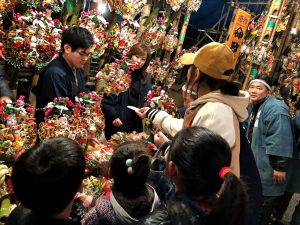
Just because the leaves are golden (or gone), and the temperature has fallen, doesn’t mean the festival numbers have gone down along with it. As always, you’ll be able to eat tasty yatai street food, purchase cool trinkets, and enjoy being outside in the crowd… Just remember to bring your jacket!
Fall in Japan means it’s time for “Tori-No-Ichi” festivals; literally, “market held on the day of the rooster” (the old Chinese calendar noted the day of the rooster comes every 12 days in November). Here, all sorts of things are sold to get ready for the busy time at the end of the year and bring luck for the coming year, including kumade rakes, which are blessed charms businesses buy to “rake in cash” by hanging them in their establishments. Some of these ornately decorative charms are over US$1000, but many are priced within reason if you fancy picking one up.
Hanazono Shrine Tori no Ichi
31 Oct-1 Nov, 12-13 Nov, 25-26 Nov 2018
If you have business in the Shinjuku area over the next month, you can’t go wrong visiting Hanazono Shrine; wedged literally in the middle of the ward’s government complex. This Tori no Ichi festival is over 400 years old, and even though the neighboring Golden Gai and Kabukicho area are as modern as ever, there’s no sign of this old-school fall festival falling out of style.
Address: 5-17-3 Shinjuku, Shinjuku-ku, Tokyo
Access: Shinjuku San-chome station [M09][F13][S02]; Shinjuku Station [JB10][JC05][JA11][JY17][JS20][OH01][KO01]
Web: http://www.hanazono-jinja.or.jp (Japanese)
Asakusa Tori-no-ichi
1, 13, 25 Nov 2018
Admittedly not exactly a hop and a skip away from the main action that happens around Senzō-ji to the south, the festival at Ōtori Jinja is still worth the extra walk because of the “shitamachi” factor. Shitamachi is one of Tokyo’s oldest neighborhoods, and you’ll be mingling with
Address: Ōtori Shrine, 3-18-7 Senzoku, Taitō-Ku, Tōkyō-to
Access: Iriya Station [H18]
Web: www.torinoichi.jp/
Okunitama Tori-no-Ichi
1, 13, 25 Nov 2018

The other major place to catch this same festival is in the city of Fuchū, in Tokyo’s western suburbs. There are many stalls in place here, and it is also customary to get a “financial fortune” read if you are a business owner or have a venture you wish to embark on in the coming year. For practical purposes, Okunitama is also only a short 5-minute walk from Fuchu station, and there’s a huge mall complex in between, so you can make a good day of it if you plan right.
Address 3-1 Miya-machi, Fuchu-shi, Tokyo
Access Fuchū Station [KO24]
Web: www.ookunitamajinja.or.jp/
Smart Illumination Yokohama 2018
31 Oct-31 Dec 2018
Japan’s Second City gets lit with the latest in LED tech, turning the bay shore next to “Elephant Trunk Park” into a digital nighttime art installation. The main festival happens from Oct 31 until Nov 4, but the lights will be on until the end of the year, helping out with winter holiday illumination duty.
Address: Zō no Hana Park, 1-1-1 Kaigandori, Naka-Ku, Yokohama, Kanagawa
Access: Nihon-Odori Station [MM05]
Web: www.smart-illumination.jp
UNU Flea Market: Fall Sake Fest
17, 18 Nov 2018
Remember the coffee festival we reported on in the springtime on the grounds of the UN University’s flea market? This is the same thing, just with sake making the rounds. More than 30 makers of Japan’s signature adult beverage will have their wares out for tasting, so make sure you “pregame” accordingly!
Address: UN University, 5-53-70 Jingumae, Shibuya, Tokyo
Access: Omotesando Station [C04][G02][Z02]
Web: www.farmersmarkets.jp/
Shichi-Go-San Festival
around Nov 15
You’ll likely notice a lot of well-dressed parents toting along with their three, five, and seven-year-old children clad in their best kimono around this time. They are heading to area shrines to pray for the children’s future health and good fortune, and also take family photos that will become keepsakes for their generation. Not necessarily a festival exactly, but some local shrines have set up a food and games stall or three to entertain the families waiting; you can simply hang out, and people watch for a spell if inclined.
Shichi-go-san festival information
Also, let’s not forget about fall leaf viewing and winter illumination festivals that are popping up around town during this time as well!
— By Jason L. Gatewood
Images: Okunitama Tora-no-Ichi by Jason L Gatewood
Oct 29, 2018
Hiroshima’s Ebisuko Festival 2018

Across Japan, Ebisu is one of Shinto’s most popular deities. Deaf and lame, and always laughing (hence the Japanese term ‘ebisugao’ for a smiling face) Ebisu is the god of fishermen and good fortune. The old tenth lunar month was called ‘kannazuki,’ or the month without gods because the entire Shinto pantheon was said to hold an assembly at the grand shrine in Izumo. But Ebisu, deaf as a post, never heard the summons, and as a result was the only shrine god available for petition during this time. And that brings us to the Ebisuko Festival.
In Hiroshima, city merchants have long regarded Ebisu as a critical member of the sales team, and since 1603 the annual Ebisuko Shrine festival has been one of the city’s most beloved events. It’s never been skipped once in all those years. Even in 1945, a scant three months after the atomic bombing of the city, survivors gathered to observe the festival. You can find haunting old footage of a 1937 festival here, with images of area shop owners announcing sales and conducting a roaring festival trade. Locals are apt to call the festival “Ebessan,” indicating their easy familiarity with both the god and his big yearly party.
The shrine itself was once larger, but for many years now has survived as small structure tucked into Ebisu-dori, the easternmost section of the downtown shopping arcade. Presently, it stands between Labi, an electronics store, and the rear entrance to Mitsukoshi department store. For a casual visitor it can be easy to miss, but if you sit, say, on the second floor of the venerable Mont Blanc cafe just across the street and watch a while, you’ll see a regular trickle of local business owners walking up the steps to rattle the ‘suzu’ bell and pay their respects.
It all changes from November 18-20, right in the middle of that month without gods, when as many as 300,000 people visit the tiny shrine and the area adjacent to celebrate. The atmosphere can be raucous. The festival is right on the edge of Hiroshima’s sprawling entertainment district, and there’s a lot of passing back and forth between the two. In former years, local ‘bosozoku’ gangs of young bikers were a persistent and profoundly obnoxious presence, and though the police cracked down on them sharply following an especially bad year in 1999, there’s still a youthful, slightly crude air to the proceedings that only makes it all more appealing. On one of the nights (usually the first) the adjacent portion of Chuo-dori is closed to car traffic and stages are erected for dance, drums and kagura performances.
In front of the shrine itself, you’ll find a large wooden barrel that slowly fills with cash over the course of the festival, as people lob coins, thousand yen bills and even the odd ten thousand yen in to offer thanks and ask for continued fortune in the coming year. Since 1901, the festival has also been known for selling ‘komazarae.’ These are bamboo rakes, in all different sizes, decorated with gold coins, treasure ships and other talismans meant to attract money. Some even say the rake form itself is intended to “rake in” the cash. Wherever you go in Hiroshima, you’ll spot these hung over the doors and behind the counters of restaurants and izakaya all over town.
So, in brief, one of the city’s three big festivals, and an unchallenged fixture of its history for over 400 years. Come check it out, and go home with a great big ebisugao.
Additional Information
Location: Ebisu-dori, behind the large Labi Electronics and Mitsukoshi Department Store.
Time: November 18-20, all day.
Access: There’s lots of paid parking within walking distance, but you’ll find it most accessible to take any downtown-bound public transportation and get off at Hatchobori. From there, walk south to Ebisu-dori.
Admission: Free
Telephone: +81-(0)82-241-6268
noppo3 [CC BY-SA 3.0 ], via Wikimedia Commons
Oct 29, 2018
Firewalking at Miyajima 2018

Japan has a slew of fire rituals, the most famous of which being Kyoto’s famous Daimonji Festival. These festivals, leveraging ancient notions of purification and renewal, continue to draw people even in the modern world. In Hiroshima, November offers two chances for visitors to experience ‘Hiwatari,’ or firewalking. The first is at Daiganji and the second at Daishoin, two old Shingon temples on Miyajima. Let’s take Daiganji first.
Daiganji Fudo Myo-o Festival
Daiganji is located just beyond the western exit from Itsukushima Shrine, which is where you’ll come out if you’ve bought your ticket and walked through. Daiganji’s age is uncertain, but it may be nearly as old as the Shrine itself, and under the old ‘bettoji’ system linking temples and shrines, Daiganji was in charge of carpentry and physical maintenance for Itsukushima. It is also one of Japan’s three most famous temples dedicated to the figure of Benzaiten, goddess of music, wisdom, and eloquence. Her image is open to viewing by the public once a year, on June 17. There are three other Buddhas enshrined here as well, along with a well-worn ‘nadebotoke,’ a wooden image of the arhat Binzuru that the faithful rub in places corresponding to their physical ailments.
In 2006 Daiganji’s Gomodo Hall was rebuilt for the first time in nearly a century and a half to house a new, four-meter tall sandalwood statue of Fudo Myo-o, the fierce Wisdom King who represents (among other things) steadfastness and the destruction of doubt and evil. Each year a festival is held in his honor. In 2018, it will take place on Saturday, November 3. The ritual begins with sutra reading and a goma burning ritual at 13:00. At 14:00, the firewalking begins, led by the priests of the temple. Visitors are welcome to participate but note that you will be required to remove your shoes and walk barefoot. Fortunately (or not), by the time you begin walking the coals will most likely have been trodden to a thin layer of barely warm ash. Still, the ritual is unusual, and afterward, you are welcome to a reception area for celebratory tea and cakes.
Daishoin Hiwatari Shiki
I’ve written about Daishoin here before. The head temple of Shingon’s Omuro sect is located farther up the slopes of Mt. Misen from Itsukushima, and is a fantastic place to explore even when nothing unusual is happening. But twice a year, you can line up with hundreds of other visitors, ranging from the devout faithful to tourists who’ve accidentally wandered in at the right time, to tread a path through burning coals. The ceremony takes place on April 15 and November 15, regardless of the day of the week. In 2018, November 15 is a Thursday, which means that if you can make it you’ll avoid the worst of the weekend crowds.
Daishoin’s firewalk ritual is linked closely to Shugendo, the syncretic mountain religion of the famous ‘yamabushi.’ The ceremony commences at 11:00, with sutra reading and offerings before the main Honden hall. Next, priests launch seven arrows into the sky, which more foolhardy believers will scramble to catch as they fall to earth. Yamabushi blow their conch horns, and the cypress bonfire is set ablaze. After it has burned down, the coals are raked out, and the firewalking begins. As at Daiganji, you’ll need to remove your shoes and, unless you manage to make it to the front of the line, the walk won’t be especially blistering. The ritual is guaranteed by believers to confer both health and luck on those who take part, so loosen your shoelaces and don’t be late.
Additional Information
Location: Daiganji and Daishoin Temples, both on Miyajima
Time: Daiganji: Saturday, November 3, 13:00 to about 15:00. Firewalking begins at 14:00.
Daishoin: Thursday, November 15, the ritual begins at 11:00.
Access: JR Ferry from Miyajimaguchi, 360 JPY round trip for adults, 180 JPY for children. From the Miyajima ferry terminal, Daiganji is a fifteen-minute walk, Daishoin about 25 minutes. English language maps of the island are available free in the ferry terminal.
Admission: Free
Website: Miyajima’s official English website is here, and is very good: http://visit-miyajima-japan.com/en/
fir0002 | flagstaffotos.com.au [GFDL 1.2], from Wikimedia Commons
Oct 29, 2018
Hiroshima Grand Inoko Festival
Inoko Festivals are a familiar feature of autumn across western Japan. Hiroshima has been running its own Grand Inoko festival since 1990, although there was a 17-year hiatus prior to 2013. This means the 2023 festival marks the 10th anniversary and so should be extra special.
What Are Inoko Festivals?
With roots in ancient Chinese harvest festivals celebrated in the tenth lunar month (the month of the boar), Inoko celebrations were observed in Japan as early as the Heian period. Over time, they developed into several distinct expressions — from the festival of the court down to that of the common folk. It’s this latter version that still leads crowds of children in red or blue ‘happi’ through the streets of their neighborhoods each autumn. Following the sound of drums, they carry a stone or heavy wooden weight supported by ropes. At each crossroads, the children pause to raise and drop the stone repeatedly, hammering the ground rhythmically as they chant ‘Inoko, Inoko, Inoko Mochi Tsuite, Hanjose, Hanjose!’ This means, roughly, “Month of the boar, month of the boar, make rice cakes and prosper, prosper!” At the end of the procession, the adults in charge pass out snacks and the children go home tired and happy.
The festival has ritual elements associated with harvest, continued fertility, and protection from fire. But if you ask the children what it all means, they’re no more likely to have an answer than a child elsewhere might start to pick apart the strands of Celtic lore and medieval superstition lurking behind Halloween. The point, from the children’s perspective, is the noise and the fun and the bag of treats. And that noise and fun, as well as a wish to revive the spirit of childhood on a grand scale, is the impetus for Hiroshima’s Grand Inoko Festival.
About the Grand Inoko Festival
In place of the tired grandfather wheeling a drum up and down the street, the music at the festival in Hiroshima includes both traditional koto and flute as well as drums and more avant-garde performances. The festivities also last longer and there’s generally a lot more sake around. But, most importantly, the stone at the heart of inoko has been reborn as a one-and-a-half-ton rock suspended by ropes from 88 bamboo poles, each 13 meters tall and arranged in a circle at the center of Fukuromachi Park — a short walk south of the Hondori shopping arcade. When the chanting begins and that boulder starts leaping up and down as the bamboo thrashes overhead, the child in you will be completely thrilled.
What to Expect
On Saturday, November 4, a children’s Inoko parade will kick things off from 11:00 a.m., moving through Hondori and Kinzagai. At 3:00 p.m., kids and parents are invited to lend a hand at the first raising and dropping of the stone. They can even pose for pictures atop the thing — that’s my own daughter at the top of this article. Children also have the chance to try their hand at making traditional bamboo toys like dragonflies and flutes or roasting marshmallows on bamboo skewers.
Adults will get funny looks if they ask for a marshmallow. Don’t worry. If you’re hungry, you’ll find plenty to satisfy you at the festival’s food stalls. They sell udon, wild boar, okonomiyaki, a “specialty grill,” and the aforementioned sake, served (naturally enough) in bamboo cups. The food stalls open around the same time the parade begins.
To finish the celebrations on Saturday, there will be a ritual dedication called Omote-Syukusai, which starts at 6:30 p.m. This is a fusion of music, dance, art, and more. In previous years, this has finished at 8:10 p.m.
The festivities will continue on Sunday with more events. There will be a second raising of the great stone at 1:00 p.m. — this one for the locals rather than for kids and their families. This is followed by another parade (this time with a drum performance) from Hondori to Fukuromachi Park at 5:40 p.m.
Things wrap up on Sunday evening. At 6:00 p.m., there will be another ritual dedication, called Ura-Syukasai. Attendees then receive traditional mochi cakes before the Tsunakiri (the grand finale), which features the ceremonial cutting of the ropes at 7:30 p.m.
Whatever time you drop by, you’ll find something to do, eat, listen to, or watch. It’s worth rolling it into a day downtown and wandering to and from the festival over the course of a long afternoon and evening. You’ll find the festival is great fun and offers a real sense of community in the middle of the city.
Put it on your calendar!
Additional Information
Location: Fukuromachi Park, three blocks south of Hondori and one block west of Namikidori.
Time: Saturday, November 4 and Sunday, November 5 from 11:00 a.m. to about 8:10 p.m.
Access: Nearby parking is all paid. Since the park is in the heart of downtown, public transportation to Hondori is far and away the easiest option.
Admission: The food stalls charge. Otherwise, this event is free.
Telephone: +81-(0)82-545-7611
Website: (Japanese) www.cetra.jp/ooinoko/index.html (English, limited information) www.cetra.jp/ooinoko/en_index.html
Photo by author
